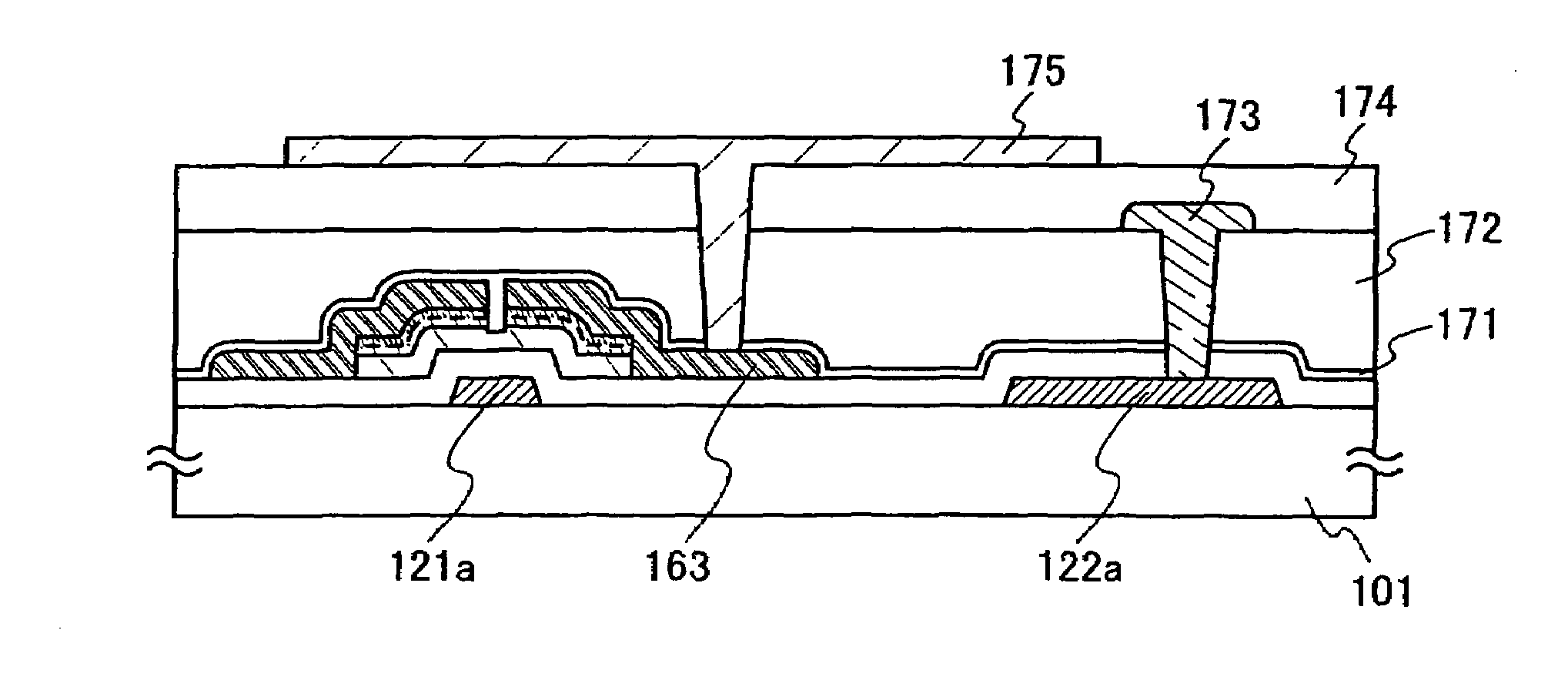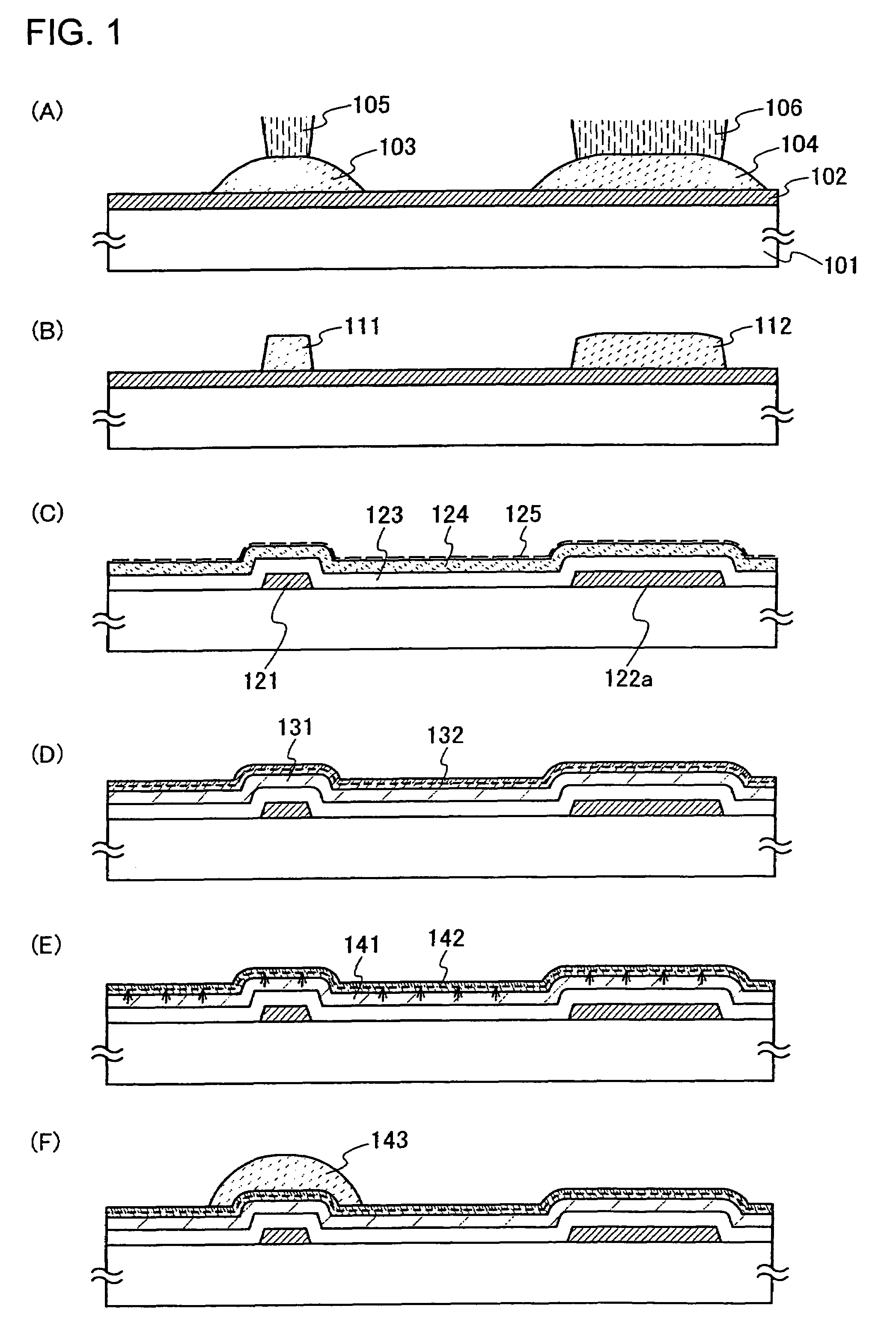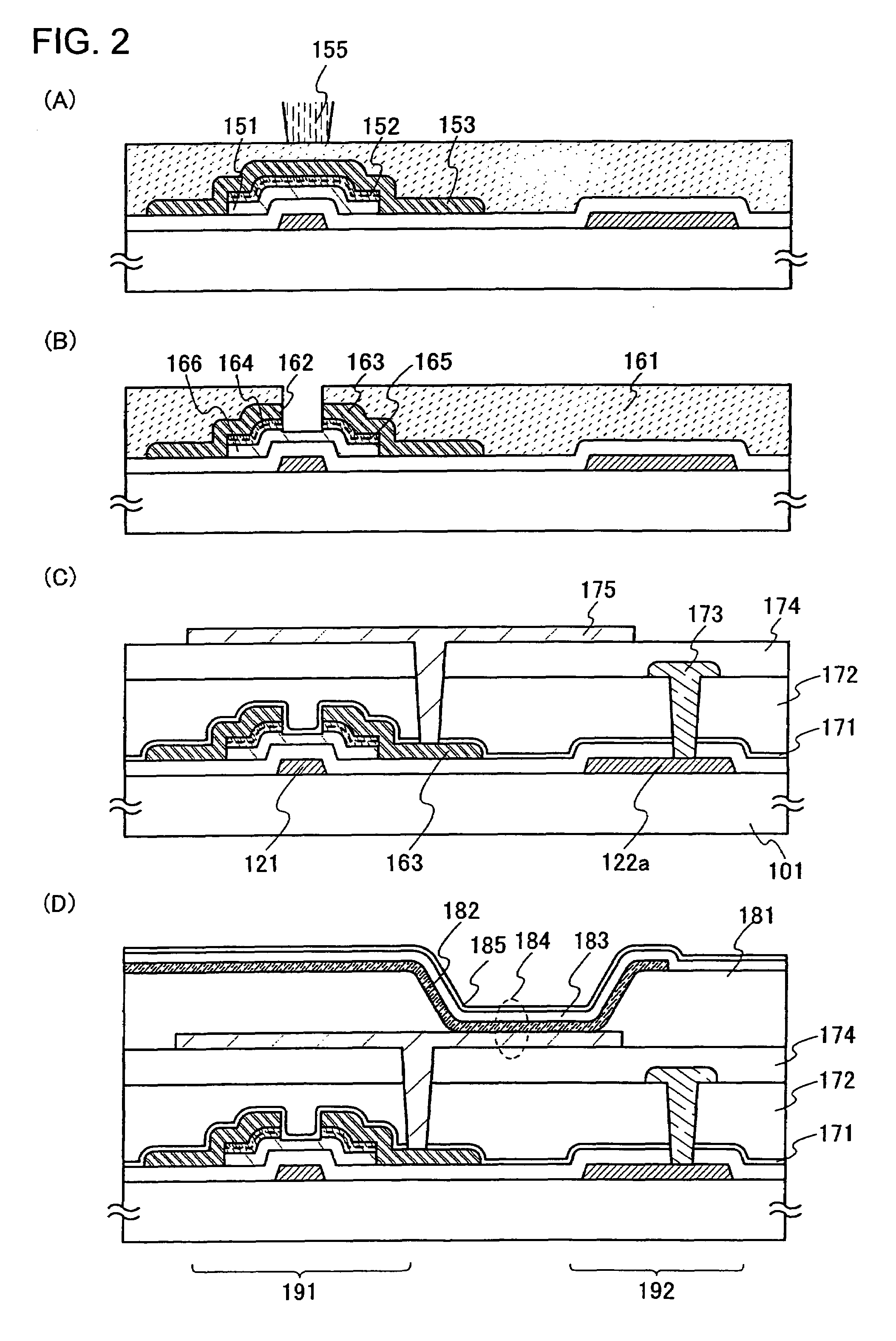Method of fabricating a semiconductor device including separately forming a second semiconductor film containing an impurity element over the first semiconductor region
a semiconductor and film technology, applied in the direction of semiconductor devices, basic electric elements, electrical appliances, etc., can solve the problems of serious image quality degradation, uneven illumination, and limitation of tft using amorphous semiconductor films, and achieve low wiring resistance, less impurity metal elements, and improved image quality
- Summary
- Abstract
- Description
- Claims
- Application Information
AI Technical Summary
Benefits of technology
Problems solved by technology
Method used
Image
Examples
embodiment mode 1
[0048]In this embodiment mode, description is made with reference to FIGS. 1 to 3, 26 and 51 on fabrication steps of an active matrix substrate in which an inversely staggered TFT having a crystalline semiconductor film is used as an element for driving a light-emitting element. In this embodiment mode, a switching TFT and a driving TFT are shown as typical examples of an element for driving a light-emitting element. FIG. 3 shows cross-sectional views and a top view of the switching TFT and the driving TFT. FIGS. 1 and FIGS. 2 show cross-sectional views illustrating a connection portion of a gate electrode and a gate wiring of a switching TFT, a driving TFT and a light-emitting element.
[0049]As shown in FIG. 1(A) a first conductive layer 102 is formed over a substrate 101, and photosensitive materials 103 and 104 are applied onto the first conductive layer, and then dried and baked. Then, the photosensitive materials 103 and 104 are irradiated with laser light (hereinafter also refe...
embodiment mode 2
[0126]In this embodiment mode, description is made with reference to FIG. 3 on a stacked-layer structure of a power source line, a source wiring, a source electrode or drain electrode, a gate wiring, and a pixel electrode of the active matrix substrate shown in Embodiment Mode 1. An embodiment mode below shows vertical cross-sectional views and a top view corresponding to FIG. 2(C) before the formation of the light-emitting element.
[0127]FIG. 3(A) is a view showing a stacked-layer structure of the driving TFT 191 and the fifth conductive layer functioning as a gate wiring of the switching TFT 192, which corresponds to the cross-sectional structure along A-B of FIG. 3(C).
[0128]FIG. 3(B) is a view showing a connection structure of the switching TFT 192 and the driving TFT 191, which corresponds to the cross-sectional structure along C-D of FIG. 3(C).
[0129]Hereinafter, the fourth conductive layer functioning as a power source line and a capacitor wiring is denoted by a power source lin...
embodiment mode 4
[0145]In this embodiment mode, description is made with reference to FIG. 5 on an active matrix substrate having a different structure of a gate wiring from Embodiment Mode 2.
[0146]FIG. 5(A) is a view showing a stacked-layer structure of the driving TFT 191 and the gate wiring of the switching TFT 192, which corresponds to the cross-sectional structure along A-B of FIG. 5(C).
[0147]FIG. 5(B) is a view showing a connection structure of the switching TFT 192 and the driving TFT 191, which corresponds to the cross-sectional structure along C-D of FIG. 5(C).
[0148]In this embodiment mode, the structures of the driving TFT 191, the switching TFT 192 and the capacitor 193 are similar to those in Embodiment Mode 2. Note that as shown in FIG. 5(C), gate wirings 1123a and 1123b are formed in each pixel, and connected to gate electrodes 122a and 122b which are provided in adjacent pixels. Therefore, the material of the gate wirings 1123a and 1123b is not specifically required to be a low-resist...
PUM
| Property | Measurement | Unit |
|---|---|---|
| size | aaaaa | aaaaa |
| size | aaaaa | aaaaa |
| size | aaaaa | aaaaa |
Abstract
Description
Claims
Application Information
 Login to View More
Login to View More - Generate Ideas
- Intellectual Property
- Life Sciences
- Materials
- Tech Scout
- Unparalleled Data Quality
- Higher Quality Content
- 60% Fewer Hallucinations
Browse by: Latest US Patents, China's latest patents, Technical Efficacy Thesaurus, Application Domain, Technology Topic, Popular Technical Reports.
© 2025 PatSnap. All rights reserved.Legal|Privacy policy|Modern Slavery Act Transparency Statement|Sitemap|About US| Contact US: help@patsnap.com



